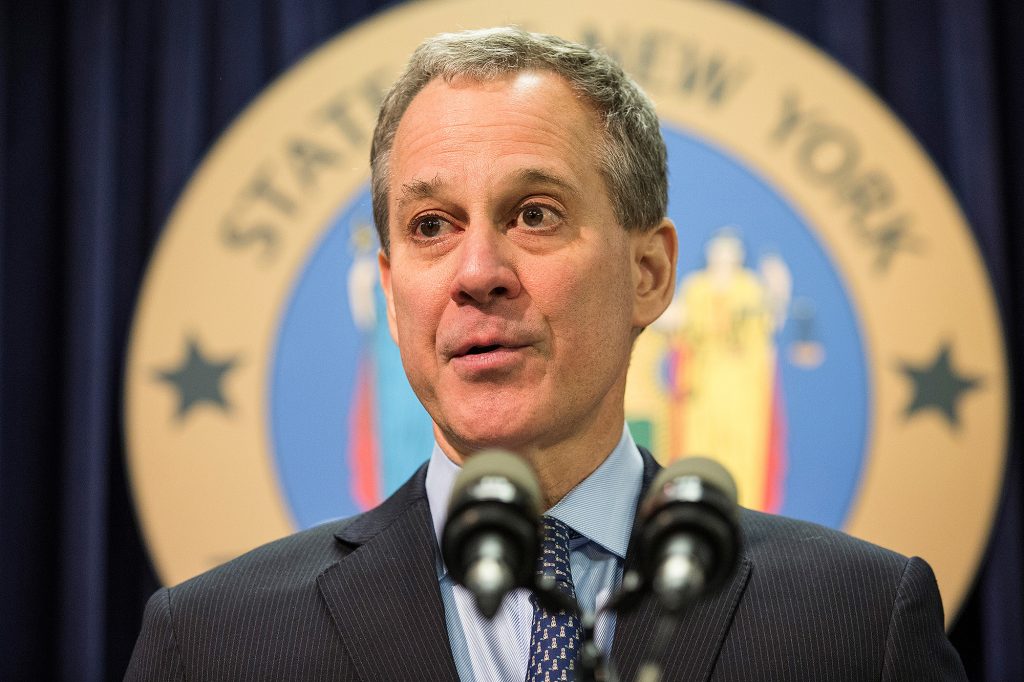Blog Post
Prominent New York abortion defender outed as abuser of women
By Jonathon Van Maren
On July 21, 2017, Elle Magazine published a glowing profile of New York State Attorney General Eric Schneiderman, the progressive champion of abortion rights. He was going to war against pro-life protestors outside abortion clinics, the writer gushed—and he had been fighting for the abortion industry his whole life. “He’s been working to get women access to abortion services since 1972,” she wrote. “Then fresh out of high school and not sure what he wanted to do next, Schneiderman moved to Washington, D.C. He found an office job, a gig so unremarkable he can hardly recall the details. It didn’t last; soon, he’d met a group of people who were in the process of setting up an abortion clinic. And he wanted to be involved.”
And for a few thousand more words, we read about Schneiderman’s work on the front lines of the abortion wars, pushing for feticide on demand and the suppression of pro-lifers attempting to rescue those children. More recent profiles highlight him as a feminist hero in the age of #MeToo, and quote his fierce denunciations of the scummy men who treat women badly, obviously assuming that nobody could ever suspect him, the champion of abortion rights. He even went after Harvey Weinstein, the knight in shining armour pursuing the hated troll on behalf of damsels in distress.
And then it all came crashing down. Women he had dated began to come forward, spurred on by their rage at his brazen lies of being a hero for women. He had been violent, they said. He beat them savagely, called them names like “f****** whore,” and choked them to the point of danger. One ex-girlfriend, the Harvard-educated Sri Lankan activist Tanya Selvaratnam, said that Schneiderman began calling her his “brown slave” and his “property” and would slap her until she called him “Master.” He demanded that she bring home other women for him to sleep with, and grew violent when she seemed resistant.
Four women have come forward to detail abuse at the hands of Schneiderman, and these allegations—which Schneiderman denied before resigning his position—are laid out in horrifying detail over in the New Yorker. An investigation into Schneiderman’s behavior has apparently been opened, considering the fact that there seems to be a lot of evidence of the physical violence allegedly perpetrated by him. Overnight, Schneiderman has gone from a feminist with impeccable credentials and a champion of abortion rights to a disturbing, violent woman-beater with the need to degrade and break down those females he was intimate with.
There is one question here that crossed my mind immediately: Why would Schneiderman, knowing how vulnerable he was to being outed as the repulsive man he was, have decided to position himself front and center on the #MeToo issue? Considering the skeletons in his closet, why would he have made fiery speeches denouncing behavior he was guilty of himself? Why would he go after Harvey Weinstein, when the accounts of his behavior indicate that he was entirely capable of the same modus operandi? Why goad his former victims by appearing sanctimonious in public?
I can’t know for sure, but I have a pretty good theory: It’s because Schneiderman was still playing by the old rules. Under the old rules, the Bill Clinton rules, you could be a pig and no one would bother you as long as you defended the abortion industry. I interviewed Juanita Broaddrick some time ago, and she described being raped at the hands of Clinton when he was attorney general in Arkansas—and how feminists were willing to defend Clinton against all comers because he supported their ideological agenda. Perhaps this was the mistake that Schneiderman made: He thought that his work on behalf of the abortion industry and other feminist causes made him too valuable to take down.
This time, it turns out he was wrong.
____________________________________________
For anyone interested, my books: The Culture War, Seeing is Believing: Why Our Culture Must Face the Victims of Abortion, and How To Discuss Assisted Suicide, are available for sale here.








